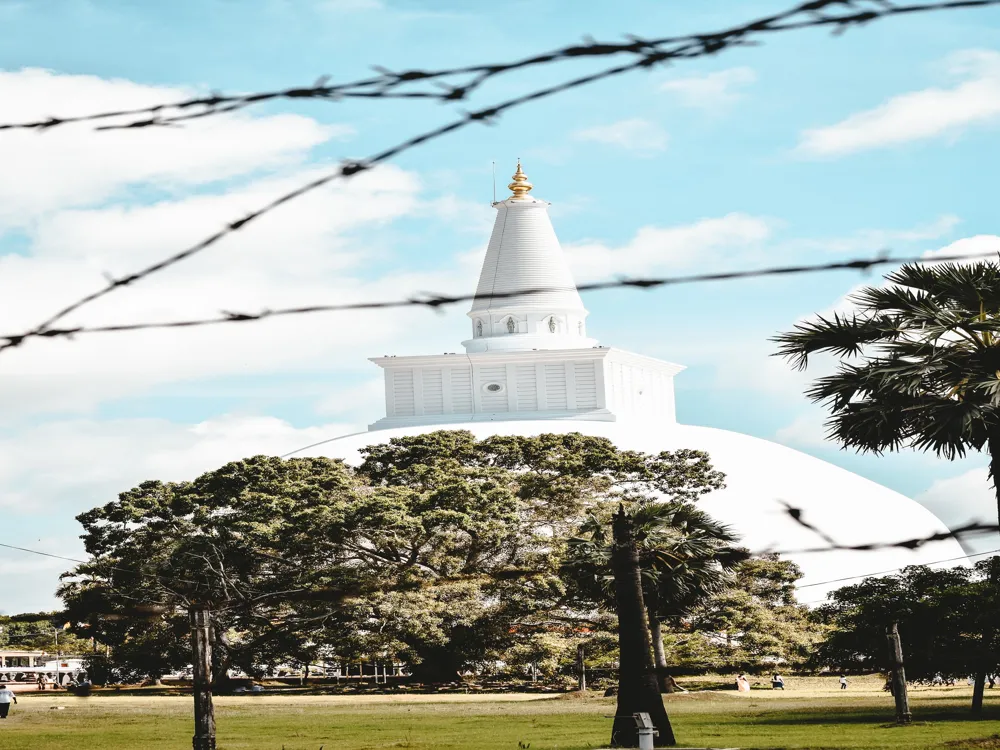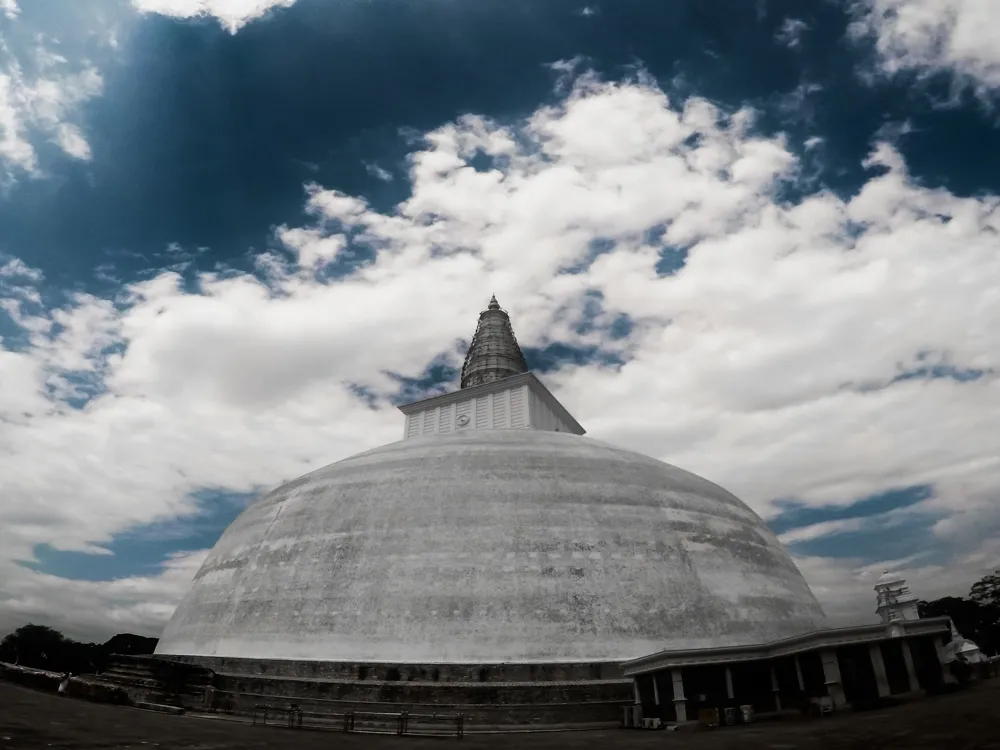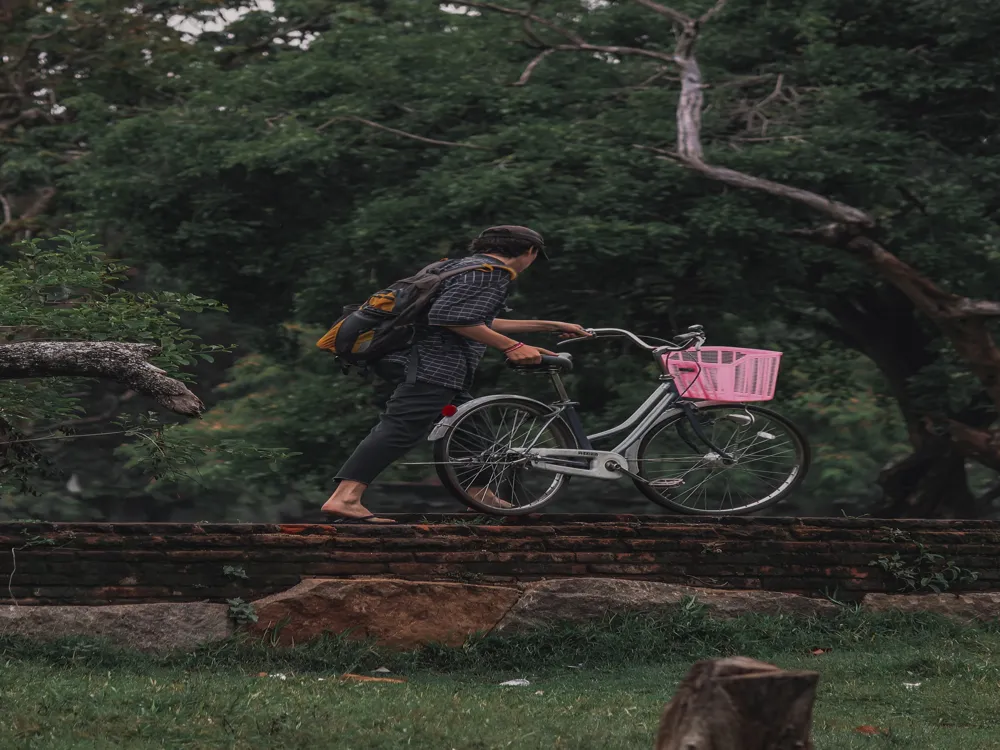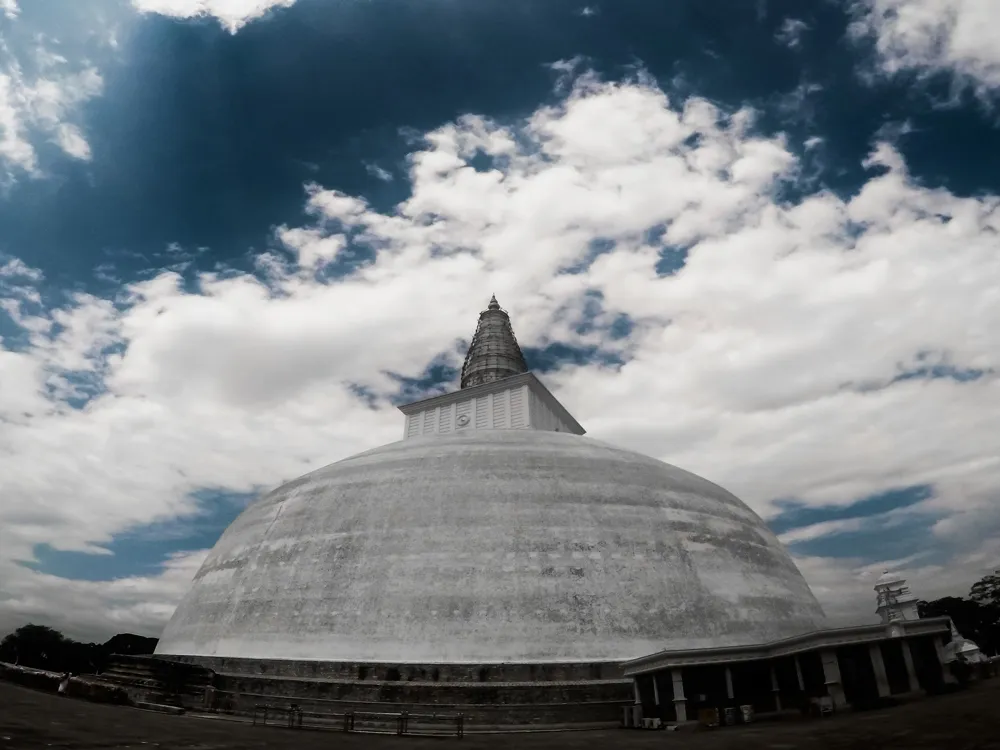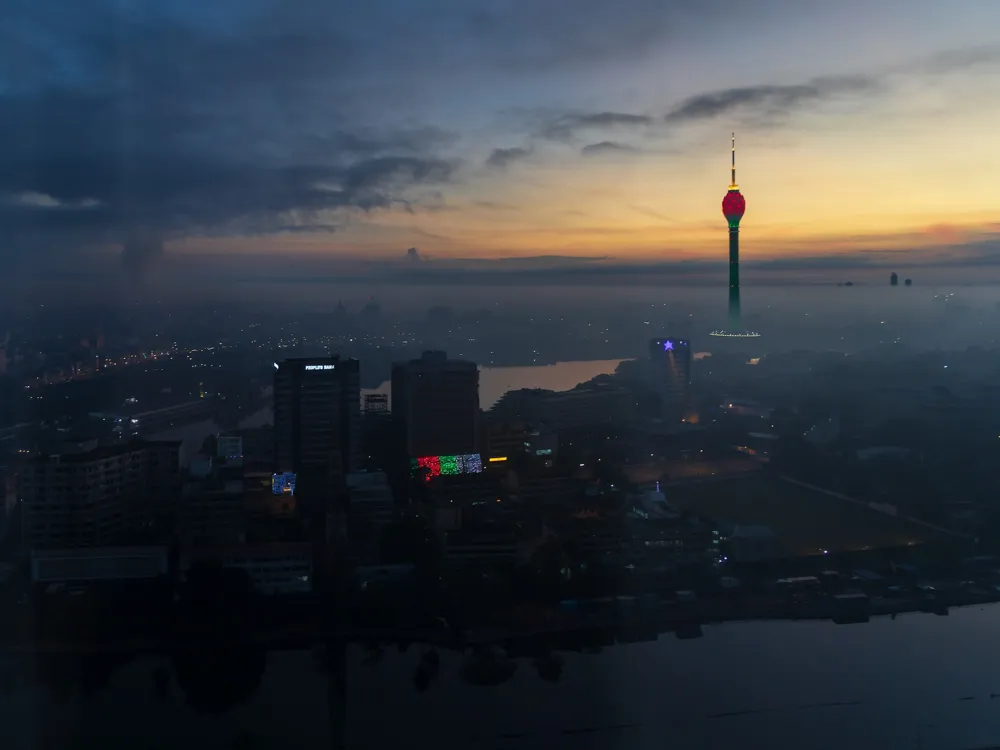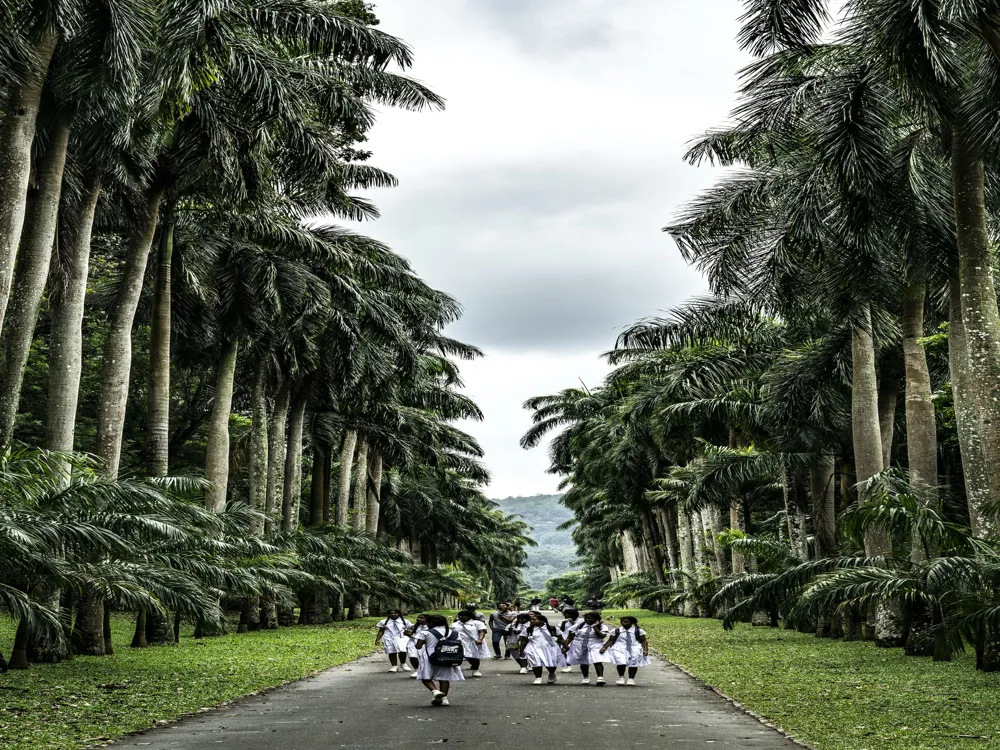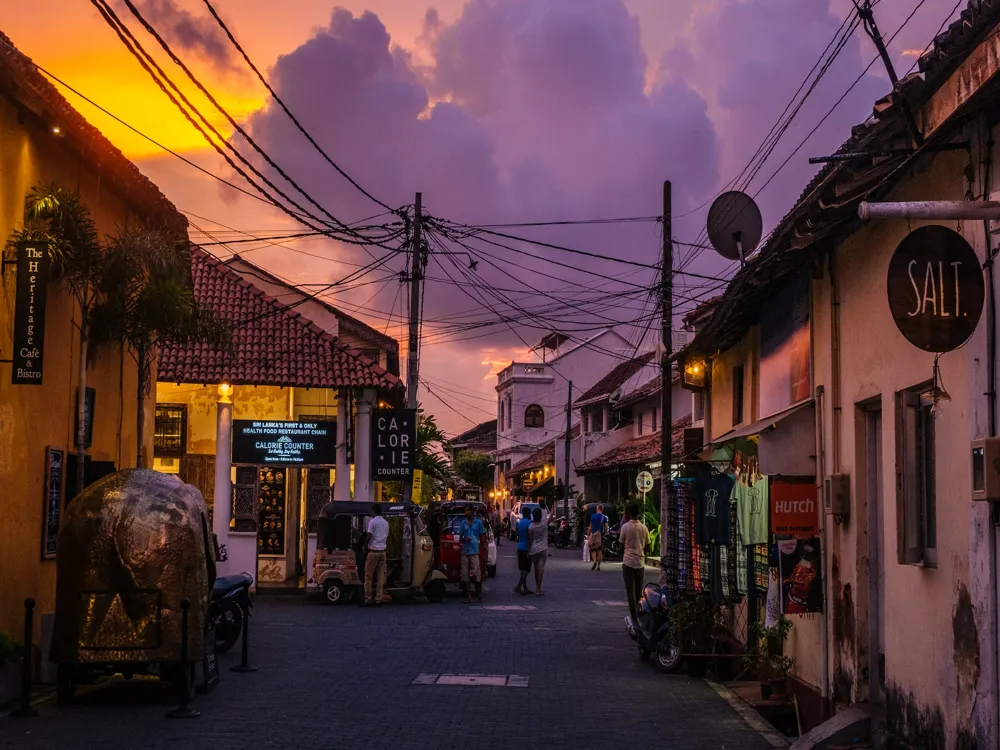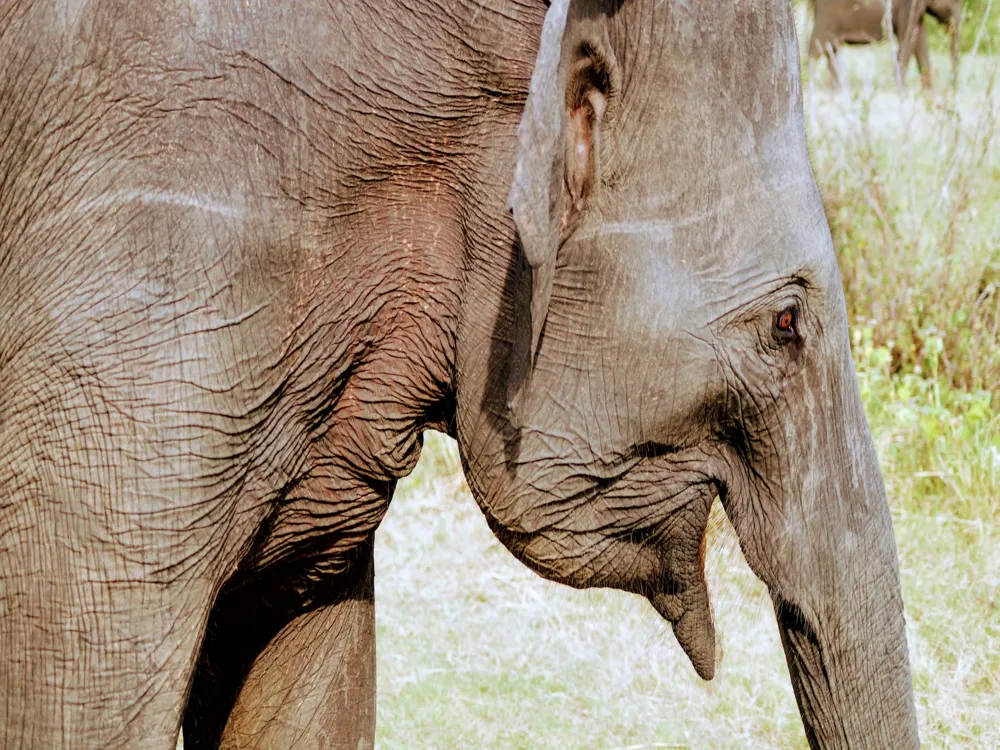Abhayagiri Vihara, located in the ancient city of Anuradhapura in Sri Lanka, stands as a testament to the rich cultural and religious history of the region. Founded during the reign of King Valagamba in the 1st century BC, this Buddhist monastery complex has been a center of Theravada Buddhism for centuries. It was named after a prominent monk, Abhaya, and the term 'Vihara' signifies a monastery. Over time, it became one of the most extensive and revered Buddhist monasteries in the ancient world, rivaling even the famous Mahavihara in Anuradhapura. The Abhayagiri Vihara complex covers over 500 hectares, making it one of the largest monastic sites. It was a hub of international Buddhist education, attracting scholars and monks from various parts of Asia. The complex features an array of architectural marvels, including stupas, moonstones, guard stones, and elaborate carvings, reflecting the artistic and spiritual zenith of the Sinhalese Buddhist civilization. Throughout its history, Abhayagiri Vihara has witnessed several changes in its architecture and religious significance. Initially, it was associated with the Mahayana and later Theravada schools of Buddhism. The monastery complex was a center for religious and philosophical studies and played a crucial role in spreading Buddhism across Asia. Its decline began with the Anuradhapura Kingdom's fall and the shifting of the capital to Polonnaruwa. Despite this, the ruins of Abhayagiri Vihara today offer a glimpse into its glorious past, attracting researchers, historians, and tourists from around the globe. The architecture of Abhayagiri Vihara is a reflection of the rich cultural and religious heritage of ancient Sri Lanka. The site is renowned for its unique blend of architectural styles, influenced by various periods and cultural interactions. The most prominent feature of Abhayagiri Vihara is its grand stupa, which once stood over 100 meters tall, making it one of the largest structures of its kind in the ancient world. The stupa's design is a significant departure from the traditional bell-shaped stupas, featuring a more elongated and bubble-like shape, indicative of the evolving architectural styles. The monastery complex includes various other structures such as monk's quarters, meditation halls, and educational facilities, each illustrating the advanced architectural techniques of the time. Intricate carvings and sculptures adorn many of these buildings, depicting Buddhist themes and stories from Jataka tales. The use of locally sourced materials like granite and limestone, along with the advanced engineering techniques, showcases the ingenuity of the ancient Sinhalese builders. One of the distinctive features of Abhayagiri Vihara's architecture is the extensive use of water reservoirs and hydraulic systems, reflecting the advanced understanding of water management in ancient Sri Lanka. These systems were not only functional, providing water for the monks and the surrounding gardens, but also held religious significance, symbolizing purity and the cleansing of the soul. Abhayagiri Vihara is a revered religious site, and visitors are expected to dress modestly and behave respectfully. It's recommended to wear clothes that cover shoulders and knees and remove shoes when entering sacred areas. The best time to visit Abhayagiri Vihara is during the cooler months from November to March. Early morning or late afternoon visits are ideal to avoid the midday heat and to experience the site in softer light. Consider taking a guided tour for a more insightful experience. Guides can provide historical context and highlight architectural and cultural details that might be missed otherwise. Photography is allowed, but it’s important to be sensitive to the religious nature of the site. Avoid posing in front of statues or religious symbols and follow any posted photography restrictions. Abhayagiri Vihara is located in Anuradhapura, easily accessible by road from Colombo and other major cities in Sri Lanka. The journey from Colombo takes approximately 4-5 hours by road. Public transportation options include buses and trains, offering a more authentic and economical way to travel. For those preferring comfort and convenience, hiring a taxi or joining a tour group is advisable. The closest airport is the Bandaranaike International Airport in Colombo, from where you can continue your journey to Anuradhapura by road or rail. Read More:Overview of Abhayagiri Vihara of Anuradhapura
Architecture of Abhayagiri Vihara
Tips When Visiting Abhayagiri Vihara
Respect the Cultural and Religious Significance
Best Time to Visit
Guided Tours
Photography Etiquette
How To Reach Abhayagiri Vihara
Abhayagiri Vihara
Anuradhapura
₹ 21,999 onwards
View anuradhapura Packages
Anuradhapura Travel Packages
View All Packages For Anuradhapura
Top Hotel Collections for Anuradhapura

Private Pool

Luxury Hotels

5-Star Hotels

Pet Friendly
Top Hotels Near Anuradhapura
Other Top Ranking Places In Anuradhapura
View All Places To Visit In anuradhapura
Faq on Anuradhapura
What is Abhayagiri Vihara in Anuradhapura?
Abhayagiri Vihara is an ancient Buddhist monastery located in Anuradhapura, Sri Lanka. It was one of the largest monastic complexes of its time and played a significant role in the spread of Buddhism in the region.
When was Abhayagiri Vihara established?
Abhayagiri Vihara was established in the 1st century BCE by King Valagamba (also known as Vattagamani Abhaya) as a sanctuary for Buddhist monks.
What is the significance of Abhayagiri Vihara?
Abhayagiri Vihara holds great historical and religious significance in Sri Lanka. It served as a center for Buddhist learning, meditation, and cultural exchange. It was also a hub for the development of Buddhist philosophy and art.
What are the main features of Abhayagiri Vihara?
The main features of Abhayagiri Vihara include a large stupa, monastic buildings, meditation halls, libraries, and extensive ruins spread across a vast area.
Is Abhayagiri Vihara still active today?
While Abhayagiri Vihara is not active as a monastery in the traditional sense, it remains an important archaeological site and a place of pilgrimage for Buddhists. Monks occasionally visit the site for rituals and ceremonies.
View anuradhapura Packages
Anuradhapura Travel Packages
View All Packages For Anuradhapura
Top Hotel Collections for Anuradhapura

Private Pool

Luxury Hotels

5-Star Hotels

Pet Friendly
Top Hotels Near Anuradhapura
Other Top Ranking Places In Anuradhapura
Faq on Anuradhapura
What is Abhayagiri Vihara in Anuradhapura?
Abhayagiri Vihara is an ancient Buddhist monastery located in Anuradhapura, Sri Lanka. It was one of the largest monastic complexes of its time and played a significant role in the spread of Buddhism in the region.
When was Abhayagiri Vihara established?
Abhayagiri Vihara was established in the 1st century BCE by King Valagamba (also known as Vattagamani Abhaya) as a sanctuary for Buddhist monks.
What is the significance of Abhayagiri Vihara?
Abhayagiri Vihara holds great historical and religious significance in Sri Lanka. It served as a center for Buddhist learning, meditation, and cultural exchange. It was also a hub for the development of Buddhist philosophy and art.
What are the main features of Abhayagiri Vihara?
The main features of Abhayagiri Vihara include a large stupa, monastic buildings, meditation halls, libraries, and extensive ruins spread across a vast area.
Is Abhayagiri Vihara still active today?
While Abhayagiri Vihara is not active as a monastery in the traditional sense, it remains an important archaeological site and a place of pilgrimage for Buddhists. Monks occasionally visit the site for rituals and ceremonies.







